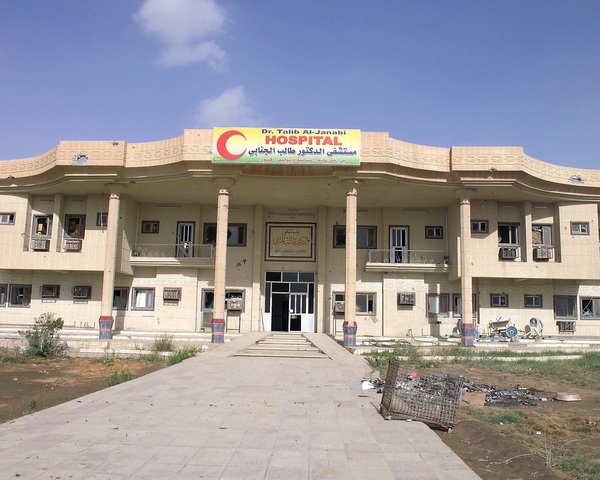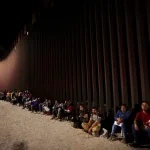
(function(d, s, id) { var js, fjs = d.getElementsByTagName(s)[0]; if (d.getElementById(id)) return; js = d.createElement(s); js.id = id; js.src = “https://connect.facebook.net/en_US/sdk.js#xfbml=1&version=v3.0”; fjs.parentNode.insertBefore(js, fjs); }(document, ‘script’, ‘facebook-jssdk’)); –>
–>
December 23, 2023
Almost twenty years ago in Iraq, U.S. and coalition forces were faced with a scenario eerily similar to what is occurring in Gaza today — noncombatants who desperately needed healthcare were being used as pawns by insurgents with an agenda. This has happened at al-Shifa, al-Quds, al-Ahli Arab and Kamal Adwan Hospitals, where their director just admitted that Hamas has been using the facility as a safe haven to hide high-ranking military operatives. Doctors, nurses, clerks, and even the director were members of Hamas’ military wing, the Izz ad-Din al-Qassam Brigades. It is more than likely that these Hamas loyalists have been willing participants in the misinformation campaign regarding casualty counts, which have been unreliable and do not differentiate between civilian and terrorist numbers.
‘); googletag.cmd.push(function () { googletag.display(‘div-gpt-ad-1609268089992-0’); }); document.write(”); googletag.cmd.push(function() { googletag.pubads().addEventListener(‘slotRenderEnded’, function(event) { if (event.slot.getSlotElementId() == “div-hre-Americanthinker—New-3028”) { googletag.display(“div-hre-Americanthinker—New-3028”); } }); }); }
In November 2004, Fallujah General Hospital, a major healthcare facility in western Iraq, was in the hands of terrorists who were using it as a command-and-control node. After the execution and subsequent mutilation of four U.S. civilian contractors not far from the front gate of the hospital, Fallujah rapidly descended into chaos. Operation Vigilant Resolve (the First Battle of Fallujah) was fought to a stalemate, followed by a withdrawal of U.S. forces. Seven months later, U.S. and coalition forces returned to wrest control of the city from the insurgents in what was known as Operation al-Fajr and Operation Phantom Fury (the Second Battle of Fallujah). This would prove to be the largest urban warfare battle since Hue City in 1968 in Vietnam. Over 13,000 coalition troops from the U.S., Iraqi Army, and the UK, led by Marine Corps Lt. Gen. Richard Natonski, were poised to take back the city. One major problem — what to do with the hospital? The Geneva Conventions protect healthcare facilities, and coalition forces had already been condemned for the destruction of Rutbah Hospital and damage to other healthcare facilities earlier in the war, so the leadership of the Marine Expeditionary Force (I MEF) wanted to make sure that did not happen again.
As a Navy public health officer with the Marine Corps’ 4th Civil Affairs Group (4th CAG), I was tasked to lead a team attached to the 3rd Light Armored Reconnaissance Battalion (3rd LAR). “Task Force Wolfpack” would spearhead the fight on a peninsula across the Euphrates River from the western side of the city of Fallujah. My orders — after the hospital was secured by coalition forces, I was to make liaison with hospital leadership, do a battle damage assessment, and oversee the delivery of humanitarian medical supplies to cover the next 90 days of their needs. The hospital was taken quickly on the first day of the operation, and several military-age males who were neither patients nor staff  were captured. Despite concerns from aid agencies that the hospital was low on supplies, every storage closet was stuffed with boxes of medical materiel, and most had International Red Crescent Markings. The director of the hospital initially declined our offer of supplies, saying that there was no room to store them. Intelligence reports had been correct — the insurgents had been hoarding donated supplies for their own use, while the general population suffered. There were several children who had been badly wounded in a mortar attack prior to the battle, and they were languishing at the hospital with infected wounds. Despite weeks of public messaging for the citizens of Fallujah to leave the city, insurgents prevented their departure from the hospital, presumably as insurance that U.S. and coalition forces would not attack. A passage of lines was coordinated to move these children, so they could get lifesaving care elsewhere, similar to what was done at Al-Shifa hospital. All the children survived and were able to get the definitive care that they needed.
were captured. Despite concerns from aid agencies that the hospital was low on supplies, every storage closet was stuffed with boxes of medical materiel, and most had International Red Crescent Markings. The director of the hospital initially declined our offer of supplies, saying that there was no room to store them. Intelligence reports had been correct — the insurgents had been hoarding donated supplies for their own use, while the general population suffered. There were several children who had been badly wounded in a mortar attack prior to the battle, and they were languishing at the hospital with infected wounds. Despite weeks of public messaging for the citizens of Fallujah to leave the city, insurgents prevented their departure from the hospital, presumably as insurance that U.S. and coalition forces would not attack. A passage of lines was coordinated to move these children, so they could get lifesaving care elsewhere, similar to what was done at Al-Shifa hospital. All the children survived and were able to get the definitive care that they needed.
Despite the ceasefire declared to facilitate the exchange of innocent Israeli hostages for Palestinian detainees, Israeli military forces (IDF) cannot allow Hamas safe haven in any hospital or clinic in Gaza. As international pressure mounts to pause hostilities with a ceasefire, The IDF should continue to press their military operations, and Hamas must immediately vacate these facilities and stop using them and the patients as shields. It is clear that Hamas is using these hospitals to commit acts “harmful to the enemy,” in this case, the IDF. When healthcare facilities are used to interfere in military operations, their specific protection is removed. If a hospital is used as a base from which to launch an attack; as an observation post; a place to store weapons; or to shelter able-bodied combatants, it loses its protection granted by international humanitarian law. In the meantime, the UN, WHO, NGOs, neighboring countries and the international community should step up and provide more medical and humanitarian assistance. They would do well to follow the examples of Egypt, Turkey, the UAE, and Jordan as well as France, Italy, and Indonesia. President Biden can have the greatest impact by continuing to let the IDF do their job to protect Israel and free all the hostages rather than trying to interfere with their strategy to win the war, as he attempts to put limits on what Israel should do in Gaza. The U.S. can contribute considerable logistic and humanitarian assets to relief efforts, but it should not have taken over seven weeks from the start of the war to do so. With U.S. leadership, the coordination of medical evacuations, establishment of field hospitals and the deployment of hospital ships will help provide care for those most vulnerable — the innocent civilians caught in the crossfire of this conflict.
‘); googletag.cmd.push(function () { googletag.display(‘div-gpt-ad-1609270365559-0’); }); document.write(”); googletag.cmd.push(function() { googletag.pubads().addEventListener(‘slotRenderEnded’, function(event) { if (event.slot.getSlotElementId() == “div-hre-Americanthinker—New-3035”) { googletag.display(“div-hre-Americanthinker—New-3035”); } }); }); }
Dr. Williams is a retired US Navy medical and civil affairs officer who served in Iraq in 2004 and was involved in the capture and resupply of Fallujah Hospital during Operation Phantom Fury. He has also served as a Marine Corps Medical Battalion commanding officer.
Image: US Marine Corps
<!–
–>
<!– if(page_width_onload <= 479) { document.write("
“); googletag.cmd.push(function() { googletag.display(‘div-gpt-ad-1345489840937-4’); }); } –> If you experience technical problems, please write to [email protected]
FOLLOW US ON
<!–
–>
<!– _qoptions={ qacct:”p-9bKF-NgTuSFM6″ }; ![]() –> <!—-> <!– var addthis_share = { email_template: “new_template” } –>
–> <!—-> <!– var addthis_share = { email_template: “new_template” } –>





